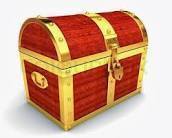ليبيا (Lībiyā — árabe)

Here is a detailed financial historical report on Libya and its currency, the Libyan dinar, based on the provided Arabic sources:
Financial Historical Report of Libya
Basic Data
-
Country ISO Code: LY
-
Official Language: Arabic
-
Language ISO Code: ar
-
Current Official Currency: Libyan Dinar
-
Currency ISO Code: LYD
Currency History in Libya
Early Currency Periods
-
Libya’s currency history dates back to ancient times, with use of Greek and Roman coins during their respective rules, including drachma and Byzantine coins.
-
After the Islamic conquest, Islamic currencies such as the dirham and dinar were used, minted in copper and gold.
-
During Ottoman rule (mid-16th century), the Turkish lira and other Ottoman coins circulated.
-
Under Italian colonization (1911–1943), the Italian lira became the official currency.
-
After World War II, Libya was divided into three regions with different currencies: Egyptian pound in Cyrenaica (east), British military lira in Tripolitania (west), and Algerian franc in Fezzan (south).
The Libyan Pound Era (1951–1971)
-
In 1951, Libya issued its first national currency, the Libyan pound (جنيه ليبي), replacing the previous currencies and unifying the monetary system.
-
The Libyan pound was pegged to the British pound sterling and subdivided into 100 piastres or 1,000 milliemes.
-
Coins included denominations such as 1, 2, and 5 milliemes and 1 and 2 piastres. Banknotes ranged from fractional piastres to 10 pounds.
-
The Libyan pound remained in use until 1971.
Introduction of the Libyan Dinar (1971–Present)
-
In 1971, the Libyan dinar (دينار ليبي) replaced the Libyan pound at a rate of 1 dinar = 10 pounds.
-
The dinar is subdivided into 1,000 dirhams (درهم).
-
The Libyan dinar was initially pegged to a basket of Special Drawing Rights (SDR) from the International Monetary Fund since 1986.
-
The dinar maintained a relatively stable official exchange rate against the US dollar until the mid-1980s.
-
Economic sanctions in the 1990s, political instability, and conflicts have caused fluctuations and depreciation of the dinar.
-
Recent years have seen efforts to unify exchange rates and stabilize the currency amid economic challenges.
Currency Details
| Attribute | Description |
|---|---|
| ISO Code | LYD |
| Singular Name | dinar (دينار) |
| Plural Name | dinars (دنانير) |
| Subdivision | 1 dinar = 1,000 dirhams (درهم) |
| Issuer | Central Bank of Libya (مصرف ليبيا المركزي) |
| Common Coin Denominations | 1, 5, 10, 20, 50, 100 dirhams |
| Common Banknote Denominations | 1, 5, 10, 20 dinars |
Designs and Symbols
-
Coins and banknotes feature national symbols such as the Libyan coat of arms, historical figures, and cultural motifs.
-
The currency includes Arabic inscriptions and numerals.
-
Banknotes incorporate modern security features to prevent counterfeiting.
Economic and Monetary Context
-
The Libyan economy is heavily dependent on oil exports, which significantly influence currency stability.
-
Political instability and sanctions in the 1990s and 2010s caused significant fluctuations in the dinar’s value.
-
The Central Bank of Libya manages monetary policy, aiming to stabilize the currency amid ongoing economic and political challenges.
-
Exchange rates have been subject to official and parallel market differences, with recent efforts to unify rates.
Historical Highlights
-
Libya’s currency evolved through multiple phases: ancient Greek and Roman coins, Islamic dirham and dinar, Ottoman lira, Italian lira, regional currencies post-WWII, Libyan pound, and finally the Libyan dinar.
-
The Libyan dinar was introduced in 1971, replacing the pound and establishing the current monetary system.
-
The dinar’s peg to the SDR basket in 1986 was aimed at stabilizing the currency internationally.
-
Economic sanctions and political turmoil have periodically undermined currency stability.
Current Status
-
The Libyan dinar is the sole official currency in Libya and is in active circulation.
-
Coins and banknotes are used in daily transactions, with ongoing updates to security features.
-
The Central Bank of Libya remains the authority responsible for currency issuance and monetary policy.
This report summarizes Libya’s rich monetary history, from ancient times through modern currency reforms, highlighting the current role and status of the Libyan dinar.
If you wish, I can prepare a translation of this report into Portuguese (Brazilian) or French.
- https://ar.wikipedia.org/wiki/%D8%AF%D9%8A%D9%86%D8%A7%D8%B1_%D9%84%D9%8A%D8%A8%D9%8A
- https://www.alquds.co.uk/%EF%BB%BF%D8%AA%D8%B3%D8%B9-%D9%85%D8%B1%D8%A7%D8%AD%D9%84-%D9%85%D9%86-%D8%AA%D8%B7%D9%88%D8%B1-%D8%A7%D9%84%D8%AF%D8%B1%D9%87%D9%85-%D9%88%D8%A7%D9%84%D8%AF%D9%8A%D9%86%D8%A7%D8%B1-%D8%AA%D8%A7/
- https://ar.wikipedia.org/wiki/%D8%AC%D9%86%D9%8A%D9%87_%D9%84%D9%8A%D8%A8%D9%8A
- https://bekam.net/%D8%B1%D8%AD%D9%84%D8%A9-%D8%A7%D9%84%D8%B9%D9%85%D9%84%D8%A9-%D8%A7%D9%84%D9%84%D9%8A%D8%A8%D9%8A%D8%A9-%D9%85%D9%86%D8%B0-1952-%D8%AD%D8%AA%D9%89-%D9%87%D8%A8%D9%88%D8%B7%D9%87%D8%A7-%D8%A7%D9%84/
- http://alfrjane.blogspot.com/p/body.html
- https://zawaya.ly/2024/04/29/4458/
- https://febp.ly/%D9%85%D9%86-%D8%A7%D9%84%D8%AC%D9%86%D9%8A%D9%87-%D8%A5%D9%84%D9%89-%D8%A7%D9%84%D8%AF%D9%8A%D9%86%D8%A7%D8%B1-%D8%AA%D8%A7%D8%B1%D9%8A%D8%AE-%D9%8A%D8%AD%D8%A7%D9%83%D9%8A-%D8%AA%D8%BA%D9%8A/
- https://www.youtube.com/watch?v=5K9BRWkVCdY
 Nilton Romani
Nilton Romani
